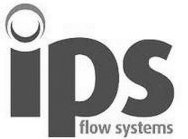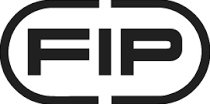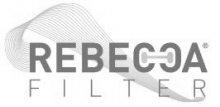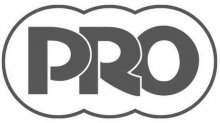Building a Strong Foundation: Exploring the Basics of Plastic Pipe Systems- |
|
VALVE |
Valves are stop and control devices for the regulation of flowing media in pipeline systems. |
WORK PRESSURE |
The term "work pressure" is understood to be the pressure necessary for the process steps.
|
CHEMICAL RESISTANCE |
Unlike metals, many plastics are due to their organic nature resistent to inorganic media, including mineral acids, alkalis and aqueous salt solutions. Hence plastic materials are preferably used for the transportation of fluid media in the chemical industry. Kwerk.de has a database of > 8000 media to check the resistance of plastic pipe systems.
|
d |
Talking about plastic pipe systems, all details concerning the nominal size relate always to the small d in m, describing always the outer diameter of the pipe and matching parts like fittings and valves.
Example: d 40 mm |
DENSITY |
The density of most plastic materials is ranging between 800 and 2200 kg/m3. Thus they are significantly lighter than metals or ceramic materials.
|
SEAL |
A seal in detachable connections (flange connections) of plastic pipe systems has to compensate the unevennesses of both flange faces. For this reason, the seal must have good deformability and elasticity.
|
DIW |
Deionized water (DIW). Demineralized water. Production of deionized waster by ion exchange.
|
DN |
Nominal diameter, dimensionless value, used in pipe systems as characteristic feature of matching parts, approximately corresponding to the internal diameter of the pipeline components in mm.
Example: DN 40 |
DVS |
DVS – Deutscher Verband für Schweißen und verwandte Verfahren e. V. (German Welding Association) is a technical and scientific specialist association, working in all fields of jointing technology.
|
NOMINAL PRESSURE |
The nominal pressure of plastic pipelines and pipeline parts, like pipes, flanges, fittings, valves or similar parts, is the indicator for a pressure stage, where similar parts with the same dimensions are grouped together. The pressure stages are standardized. The numeric value of a nominal pressure (abbreviation: PN) is equal to the maximum applicable pressure at a operating temperature of 20°C.
|
EPDM |
DIN abbreviation for elastomeric terpolymers made of ethylene, propene and diene rubbers (polymethylene). EPDM materials find manifold applications in plastic pipe systems.
|
E modulus |
In materials technology, the elastic modulus is a characteristic value, showing the relation between stress and strain during the deformation of a solid body with linear elastic behaviour. Commonly the elastic modulus is also called stretching modulus.
|
FLANGE CONNECTION |
A flange connection is a detachable connection in plastic pipe systems. Flange connections are held together by bols forces. A seal is required between the sealing faces of the flanges. The current technology differentiates between various materials and seal types.
|
FLANGES |
The dimensional standards of flanges are based on matching connecting dimensions, regardless of their design. Flanges of the same nominal diameter and the same nominal pressure can be connected and interchanged, independent from the type.
|
FPM |
DIN abbreviation for rubbers with fluorine, fluoralkyl or alkoxy groups. We use this proven sealing material in the application of acids and alkalis.
|
GFK |
GRP - Glass-fibre reinforced plastic is a fibre-plastic composite made of plastic and glass-fibres.
|
FKM |
FKM is a fluorine rubber and describes a group of rubbers. FKM is particularly suited to thermal and chemical application cases. In piping technology FKM is widely used for O-rings, diaphragms for valves and flat seals. In many cases the name FPM (Viton ®) is used as this material has been developed by the company DuPont Elastomers.
|
HEATED COIL WELDING |
By means of the heated coil welding procedure, plastic pipes made of semi-crystalline thermoplastics (e.g. polyethylene, polypropylene, polybutene) can be joined together. This procedure is applied according to the rules of the German Welding Association (DVS).
|
HEATED TOOL BUTT WELDING |
By means of the heated tool butt welding plastic pipes and molded parts made of semi-crystalline thermoplastics (e.g. polyethylene, polypropylene, polyvinylidenefluoride ) can be joined together. This procedure is applied according to the rules of the German Welding Association (DVS).
|
HEATED TOOL SOCKET WELDING |
By means of the heated tool socket welding plastic pipes and molded parts made of semi-crystalline thermoplastics (e.g. polyethylene, polypropylene, polyvinylidenefluoride ) can be joined together. This procedure is applied according to the rules of the German Welding Association (DVS).
|
DVGW |
The DVGW ( Deutscher Verein des Gas- und Wasserfaches e. V) is the German Association for Gas and Water, headquartered in Bonn. In self-administration, this association deals with technical and scientific issues in fuel gas and water supply.
|
COMPENSATOR |
A compensator is a flexible element equalizing movements in pipelines, particularly in case of thermal length variations, vibrations ,wall ducts or setting phenomens. Compensation will be realized mechanically by means of an elastic bellow.
|
Cv value |
The Cv value, also known as flow coefficient, is a measure for the achievable flow rate of a fluid or a gas through a valve and helps to select and to dimension the valves. The Cv value corresponds to the water flow through a valve (in m³/h) at a pressure difference of 1 bar (exactly 0,98 bar) and a water temperature of 5 °C - 30 °C. Depending on valve size, the Cv value is frequently indicated in l/min as well.
|
LAMBDA |
The friction factor Lambda is a dimensionless key figure to calculate the pressure loss in case of flow in a pipe.
|
PN |
For plastic pipe systems the nominal pressure indicates a reference level. According to DIN, EN, ISO the specification is given as PN (pressure nominal), followed by a dimensionless whole number, stating the design pressure in bar at room temperature (20 °C). Within a pipe system the wall thickness of the pipes and also the dimensions of flanges and fittings are based upon the nominal pressure stage. By indicating the combination of nominal pressure stage PN and nominal diameter DN the interchangeability of piping components like flanges, fittings, valves, etc. is assured.
|
POLYSULFONE |
Polysulfone is an amorphous high-performance plastic material with a slightly brown transparency. In chemistry, polysulfone is abbreviated by the letter combination PSU. The chemically related polymere polyethersulfone (PES) belongs to the polysulfone group as well. Among others, the characteristics of PSU and PES are a high degree of rigidity, a high long-term service temperature, optimum electrical insulation properties and resistance to the contact with oil. The BASF plastic materials Ultrason® S (polysulfone) and Ultrason® E (polyethersulfone) show these features too. Source: BASF
|
PP-R |
PP-R (random-copolymerized-polypropylene) with high molecular weight and heat stabilization, colour: green. This material meets the requirements of DIN EN ISO 15874 regarding plastic pipe systems for hot and cold water installations. Pipes and fittings made of PP-R are registered at the DVGW (German Association for Gas and Water) and correspond to the "KTW" recommendations (German quality standard for rubber and plastic components in contact with drinking water) of the BGA (Federal health office).
Working pressure: - for cold water at 20°C up to 20 bar - for hot water at 70°C up to 10 bar - for heating at 70°C up to 3 bar Typical applications: pipes for drinking water, hot water and heating systems, rain water utilization systems, plant construction, underfloor heating, greenhouses, indoor swimming pools, shipbuilding, thermal baths, water treatment, compressed air lines and many others. PP-R pipes and fittings show all advantages, proven to be effective for decades in all branches of industry and installation technology. Primarily the excellent corrosion resistance guarantees for a long-lasting service life of pipe systems in home technology without any fear of pipeline damage. Hence, polypropylene is a good choice when installing pipe work for cold and hot water. |
PVC U |
UNPLASTICIZED polyvinylchloride is an amorphous thermoplastic material. PVC U (abbreviation) is hard and brittle; only by adding plasticizers and stabilizers it becomes soft, moldable and usable for technical applications. Diverse products made of PVC U, like pipes, fittings and semi-finished products will be applicable in plant construction and equipment manufacturing. PVC U parts can be joined together for instance by means of solvent adhesives or by welding processes.
|
PVC - UV RESISTANCE
|
Even though PVC pipes having stored outdoors for a longer period change their colour, the internal stability remains unchanged. The altered appearence of the pipes is caused by the change of colour pigments under the influence of UV radiation, rain and air humidity. There is no alteration in the material behaviour. When bonding the PVC, the colour changes should however be removed.
|
R&I |
Piping and instrumentation diagram (P & I); drawings showing the process, the instruments and the flow chart.
|
PVC C |
An essential difference between the PVC C compared with the PVC U is the improved chemical and temperature resistance. PVC C is particularly suited to aggressive media being in use under pressure at increased temperatures. PVC C can be further processed with the adhesive method, just as PVC U.
|
REYNOLDS NUMBER |
The Reynolds number is a dimensionless value in fluid mechanics. This value can be understood as ratio of inertia forces to viscous forces within a fluid. As a result, the turbulence structure of geometrically similar bodies is identical for the same Reynolds number.
|
SDR |
Standard Dimension Ratio (SDR) is a common identification number for the rating of plastic pipes and describes the correlation between the outer diameter of the pipe and the thickness of the pipe wall. The dimensionless number indicates the pressure resistance, in order to guarantee a certain pressure resistance. Depending on type of material, a specific SDR number is indispensable.
The following is applicable: • the greater the wall thickness, the smaller the SDR number, • the smaller the SDR number, the more pressure resistant the pipe. Most common are the SDR numbers: 11, 17 , 17,6 and 33 etc. |
VELOCITY OF FLOW |
The velocity of flow in plastic pipes is an important factor for the technical layout. This velocity of flow or flow rate in plastic pipe systems shall never exceed 2 m/s, as otherwise there is a risk of cavitation.
|
TANGIT |
Tangit PVC adhesives are special adhesives for the tight connection of thermoplastic pressure pipe systems made of PVC and ABS. Tangit PVC adhesives can be used in supply and disposal of pneumatic delivery systems and acid lines. Since more than 45 years Tangit PVC U is standard for initial installation in underground constructions. It is also available as fast formulation Tangit PVC-U express - especially adapted to repair work or spontaneous renovations during ongoing operation of plants. Tangit Dytex is the speciality product for the acid line construction, Tangit ABS the speciality product for cooling systems.
Tangit is a brand product, made by HENKEL. Kwerk.de recommends TANGIT as adhesive. When using the adhesive, please observe always the relevant material safety data sheet! |
THERMOPLASTICS |
Thermoplastics also called plastomers are plastics, capable of being deformed in a specific temperature range. This process is reversible, i.e.it can be repeated as often as desired by means of cooling down and rewarming up to the fused state, unless the so-called thermic decomposition gets started due to excessive heating. This is the difference between thermoplastics and thermosets as well as elastomers. Another unique feature is the weldability of thermoplastics.
|
TROGAMID |
Due to its chemical structure, TROGAMID® T belongs to the group of amorphous polyamides; this means that it is transparent (designation according to ISO 1874: PA NDT/INDT). Additionally, the amorphous structure features a low tendency to shrink or warp. At the same time, the molding compounds have the following distinguishing features:
• transparent, high light transmission • high mechanical strength • high heat resistance • high toughness • compared to other plastics, good chemical resistance • good electrical properties • low molding shrinkage Because of this particular combination of properties TROGAMID® T is used in many industrial branches: in electrical engineering for example for high voltage switch housings, battery seals and relay housings, in filter technology for filter cups, pump housings and inspection windows and in mechanical and apparatus engineering for flow meters, level indicators, and valve and control units for mixing and metering equipment. |
VALVE |
With a valve volume flows in pipelines are shut off or finely regulated. The volume flows can be liquid or gaseous.
|
VOLUME FLOW |
The volume flow or flow rate in a pipeline is an important physical value in pipe technology. The flow rate indicates the volume of a liquid or gaseous medium, passing per unit time through a defined pipe section. Common terms are: liters per hour or m³/h in plastic pipelines.
|
KTW |
The KTW recommendation (German quality standard for rubber and plastic components in contact with drinking water) stands for the evaluation from health point of view of plastics and other non-metallic materials within the Foodstuffs and Commodities Act for drinking water systems. A distinction is made between cold, warm and hot water audits.
|
ZETA |
In fluid mechanics the pressure loss coefficient or drag coefficient ZETA indicates a dimentionless value for the pressure loss in a flowed pipe, valve or component.
|
PERMISSIBLE OPERATING PRESSURE |
The permissible pressure in plastic pipe systems is the maximum possible overpressure in a pipeline component, taking into consideration all potential operating states.
|
Optimize your shopping experience with our detailed delivery information |
Partnership at the highest level. |
|
|
|
|
|
|
|











































